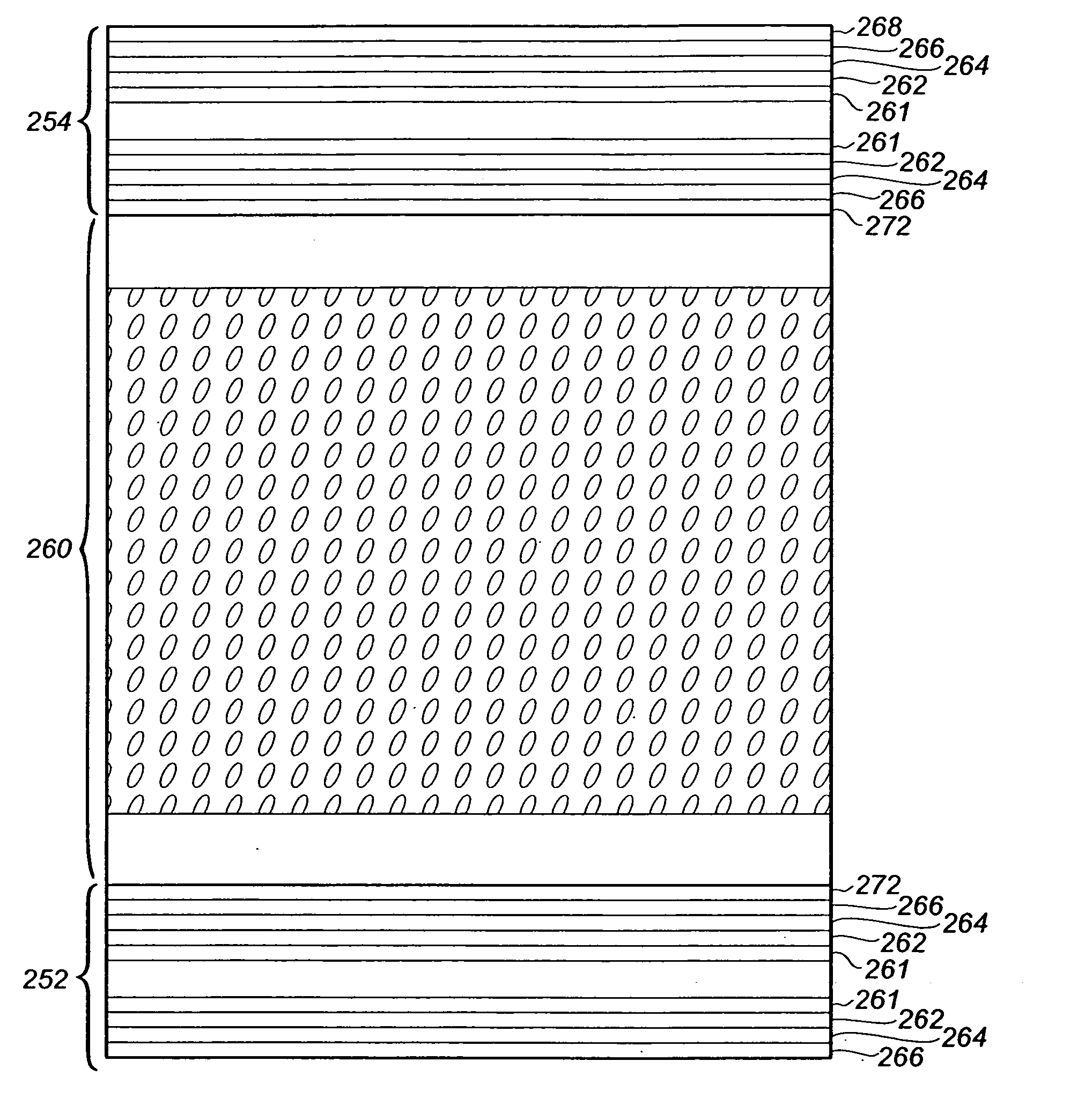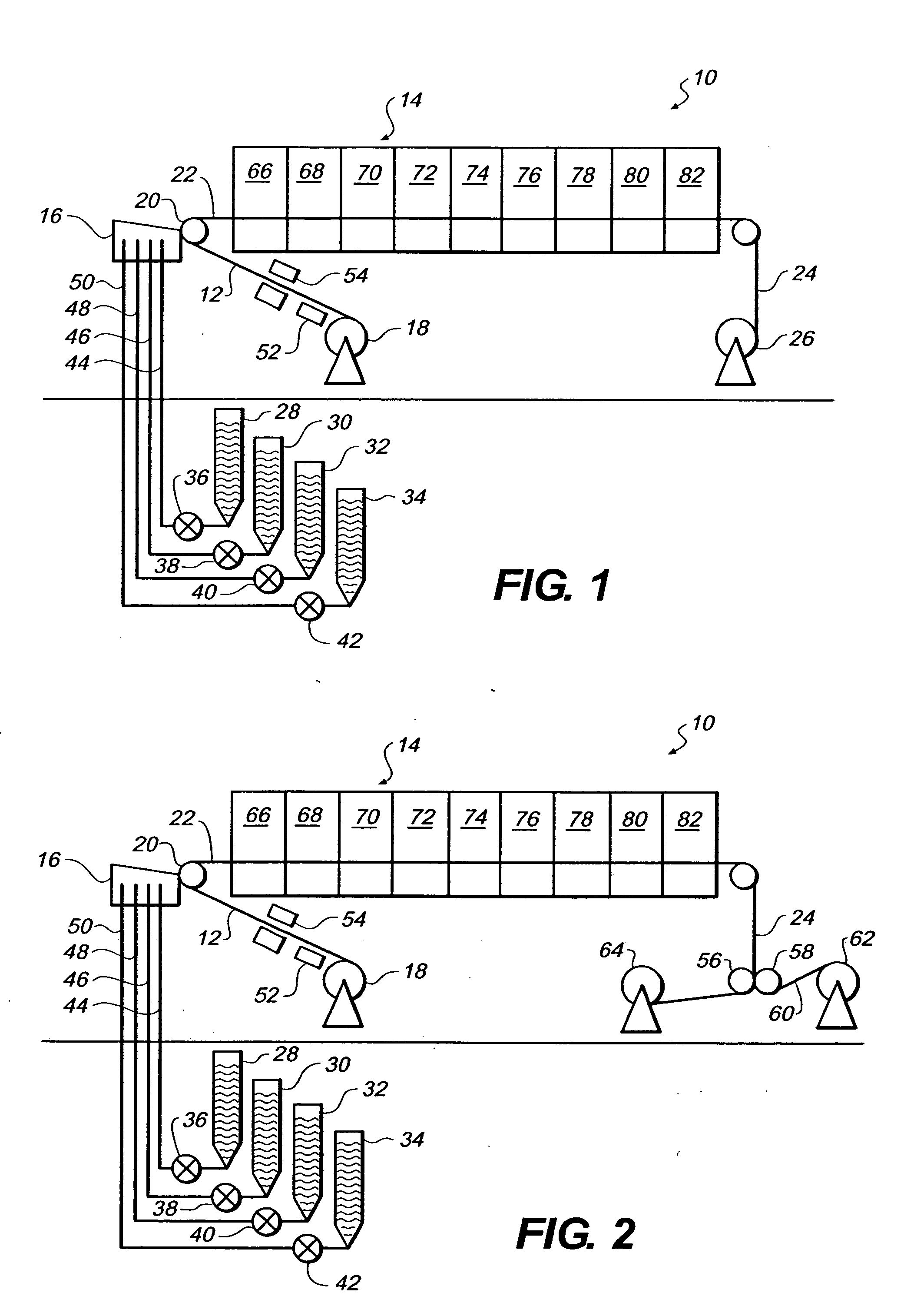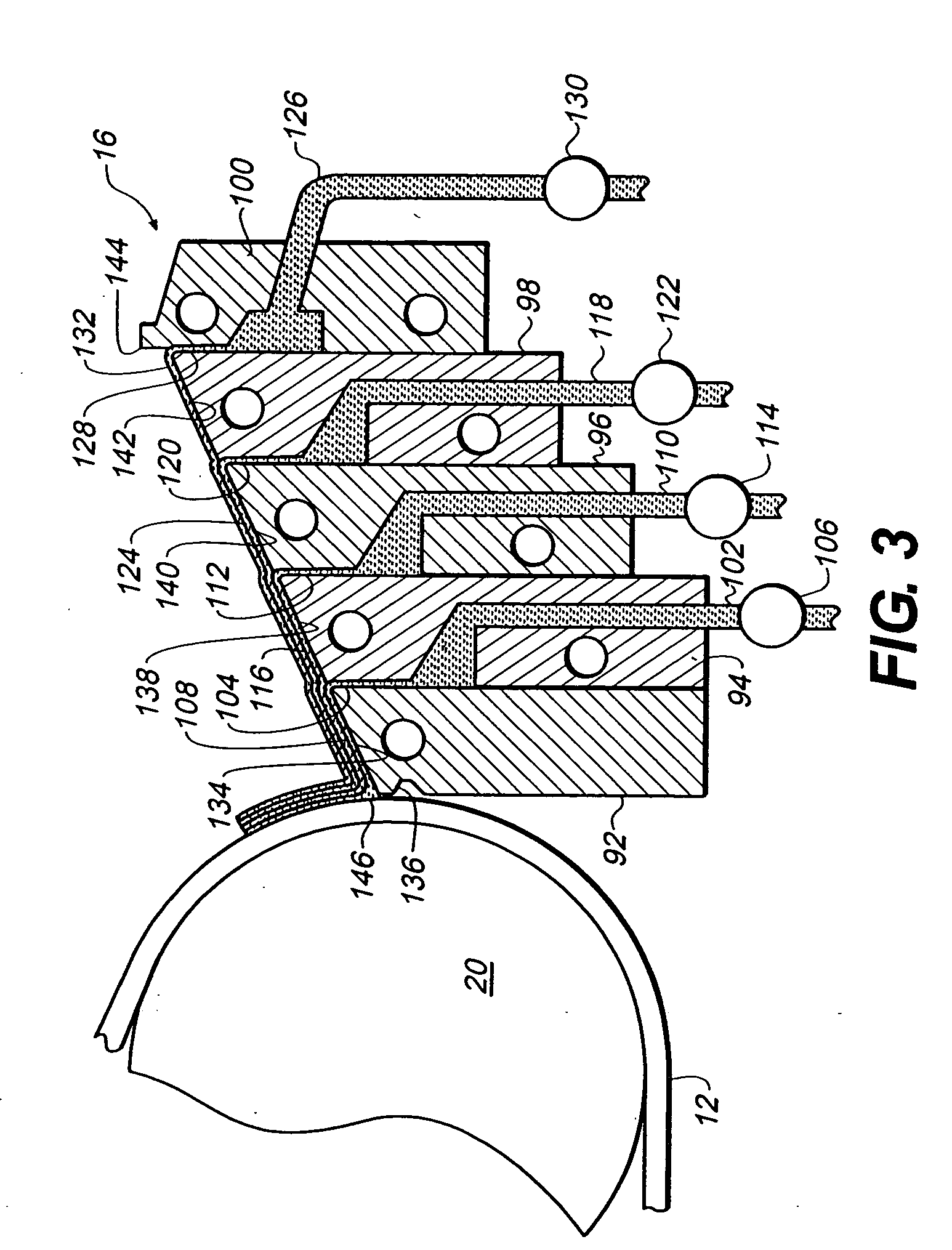Polarizing plate laminated with an improved glue composition and a method of manufacturing the same
a technology of glue composition and polarizing plate, which is applied in the field of polarizing plate, can solve the problems of dimensional instability, high cost, and high cost of pva film used in the formation of polarizer, and achieve the effect of improving interlayer wet adhesion and improving interlayer dry adhesion
- Summary
- Abstract
- Description
- Claims
- Application Information
AI Technical Summary
Benefits of technology
Problems solved by technology
Method used
Image
Examples
example 1 (
INVENTION)
[0173] A 100 micrometer thick poly(ethylene terephthalate) (PET) carrier substrate having an antistatic backing layer (backside) is coated on its front surface with a layer promoting adhesion to PVA film comprising Celvol® 107 PVA (poly(vinyl alcohol) having a degree of hydrolysis of greater than 99%, available from Celanese Corp.) having a dry coating weight of about 12.5 mg / ft2 (125 mg / m2. The dried layer is then overcoated with a triacetyl cellulose (TAC) formulation comprising four layers: a surface layer comprising CA-438-80S (triacetyl cellulose from Eastman Chemical) having a dry coating weight of about 208 mg / ft2 (2080 mg / m2), dihexyl cyclohexane dicarboxylate having a dry coating weight of about 20.8 mg / ft2 (208 mg / m2), and Surflon® S-8405-S50 (a fluorinated surfactant from Semi Chemical Co. Ltd) having a dry coating weight of about 21 mg / ft2 (210 mg / m2); a upper mid layer comprising CA-438-80S having a dry coating weight of about 1372 mg / ft2 (1320 mg / m2), Surflon...
example 3 (
INVENTION)
[0177] A 100 micrometer thick poly(ethylene terephthalate) (PET) carrier substrate having an antistatic backing layer (backside) is coated on its front surface with a layer promoting adhesion to PVA film comprising Celvol® 107 PVA (poly(vinyl alcohol) having a degree of hydrolysis of greater than 99%, available from Celanese Corp.) having a dry coating weight of about 25 mg / ft2 (250 mg / m2), Zirconium Nitrate having a dry coating weight of 1 mg / ft2 (1 mg / m2), and Cymel® 303 (an organic crosslinker available from Cytec Industries) having a dry coating weight of 1 mg / ft2 (1 mg / m2). The dried layer is then overcoated with a layer serving as the tie layer comprising poly(ethyl acrylate-co-vinylidene chloride-co-methacrylic acid) (acid number 65) having a dry coating weight of about 100 mg / ft2 (100 mg / m2).
[0178] The dried layer is then overcoated with a triacetyl cellulose (TAC) formulation comprising four layers: a surface layer comprising CA-438-80S (triacetyl cellulose from ...
PUM
| Property | Measurement | Unit |
|---|---|---|
| water contact angle | aaaaa | aaaaa |
| melting temperature | aaaaa | aaaaa |
| thickness | aaaaa | aaaaa |
Abstract
Description
Claims
Application Information
 Login to View More
Login to View More - R&D
- Intellectual Property
- Life Sciences
- Materials
- Tech Scout
- Unparalleled Data Quality
- Higher Quality Content
- 60% Fewer Hallucinations
Browse by: Latest US Patents, China's latest patents, Technical Efficacy Thesaurus, Application Domain, Technology Topic, Popular Technical Reports.
© 2025 PatSnap. All rights reserved.Legal|Privacy policy|Modern Slavery Act Transparency Statement|Sitemap|About US| Contact US: help@patsnap.com



